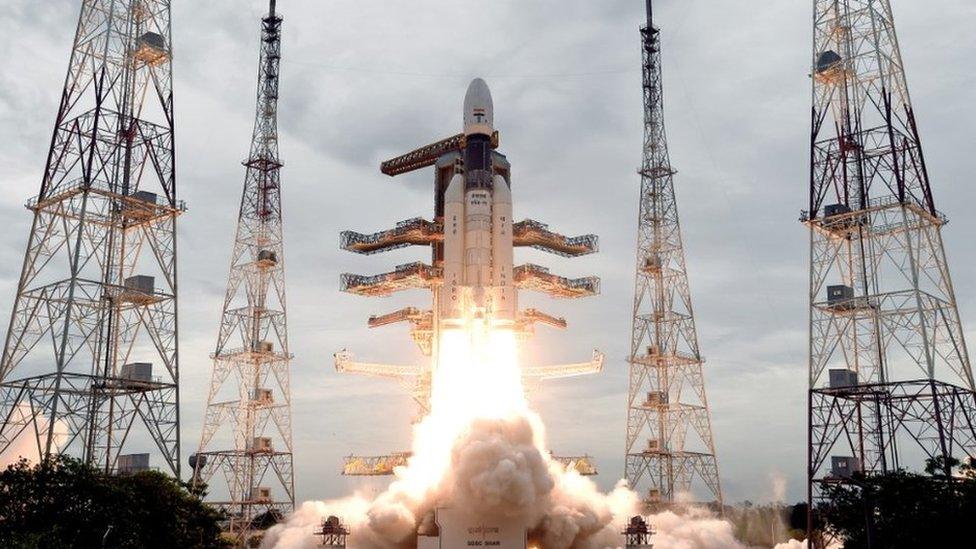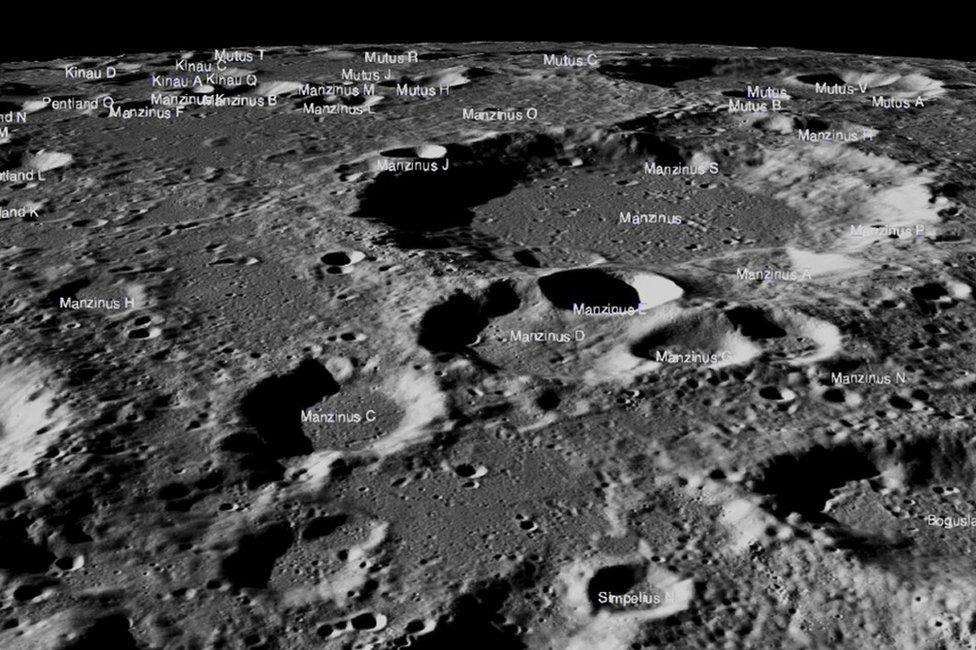Chandrayaan-2: Was India's Moon mission actually a success?
- Published

The mission's launch was broadcast live on TV to an audience of hundreds of millions
India's Moon lander, which lost contact with scientists seconds before it was to touch down on the lunar surface, is yet to be located. But scientists tell BBC Hindi's Imran Qureshi why the ambitious mission cannot be dismissed as a failure.
Millions of Indians watched the Vikram Moon lander's final heart-stopping descent in the early hours of 7 September - its progress was beamed across television screens and social media accounts.
But during the final stage - known as the "hovering" stage - a problem occurred. The lander was about 2.1km (1.3 miles) from the lunar surface when it lost contact with scientists, dashing hopes that India would become only the fourth country to achieve a soft landing on the Moon.
Since then, the US space agency Nasa has said the lander made a "hard landing". New pictures from a Nasa spacecraft show the targeted landing site - but they were taken at dusk, and unable to locate the lander.

Nasa tweeted images of the targeted landing site
Chandrayaan-2 was the most complex mission ever attempted by India's space agency, Isro. Its chairman K Sivan - who had earlier described the final descent as "15 minutes of terror" - has since said the mission was "98% successful", based on the findings of an official committee, external.
Mr Sivan's remarks have been met with criticism from scientists who said it was too early for Isro to term the mission a success, especially since its most important goal - to land a rover on the Moon's surface that can gather crucial data - remains unrealised.
Named after Vikram Sarabhai, the founder of Isro, the lander carried a 27kg rover with instruments to analyse the lunar soil.
If the lander had touched down at the precise targeted spot - between two large craters - the rover would have rolled on to the surface of the Moon and gathered data and images to send back to Earth for analysis. It had the capacity to travel 500m from the lander in its 14-day life span.
The successful launch of India's Moon mission
Some former and current Isro scientists have however, supported Dr Sivan, and said it is unfair to call the mission a failure.
Speaking on the condition of anonymity, an Isro scientist told BBC Hindi that the success of a space mission has to be measured in terms of "the returns you get".
"We had a precise launch, the orbiter was manoeuvred as anticipated which is a major part of the success and even the lander passed through all the three phases except that in the last phase it did not function as per our expectations," he added.
He pointed out that they would now rely on data they received from the orbiter. "The life of the orbiter got enhanced from one year to seven years because a lot of fuel was not consumed. We were lucky. If you are getting data for seven years from orbiter, it means many technologies have worked."
Dr Madhavan Nair, former chairman of Isro, said "only a small portion of the mission" had failed, and although the lander had not made a soft landing, it had lost contact "very close to the surface of the moon."
He added that "weightage" must be given to every stage of the mission, and that all the other stages - the launch, the orbiter's precise placement in the Moon's orbit, and the separation of the lander from the orbiter - had been successful.
"Perhaps, we have had the finest picture of the surface of the Moon taken by the global community," he said.
A soft landing on another planetary body - a feat achieved by just three other countries so far - would have been a huge technological achievement for Isro and India's space ambitions, according to science writer Pallava Bagla.
He adds that it would also have paved the way for future Indian missions to land on Mars, and opened up the possibility of India sending astronauts into space.
It appears Isro is already gearing up for that.
Dr Sivan told The Hindu newspaper, external, "By December 2021, the first Indian will be carried [into space] by our own rocket. Isro is working on that".
Is India's prime minister right when he calls his country a space superpower?
- Published6 September 2019

- Published22 July 2019
